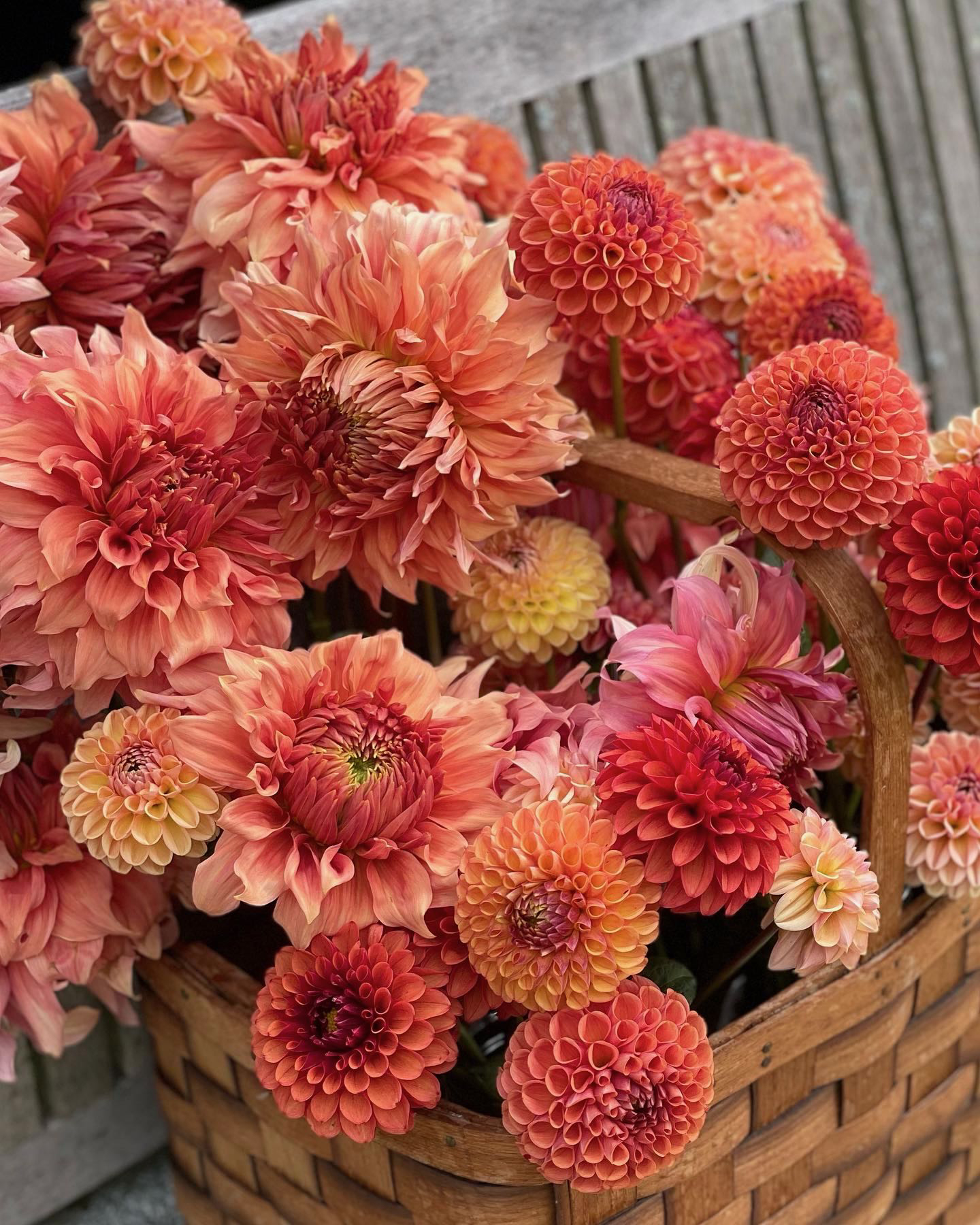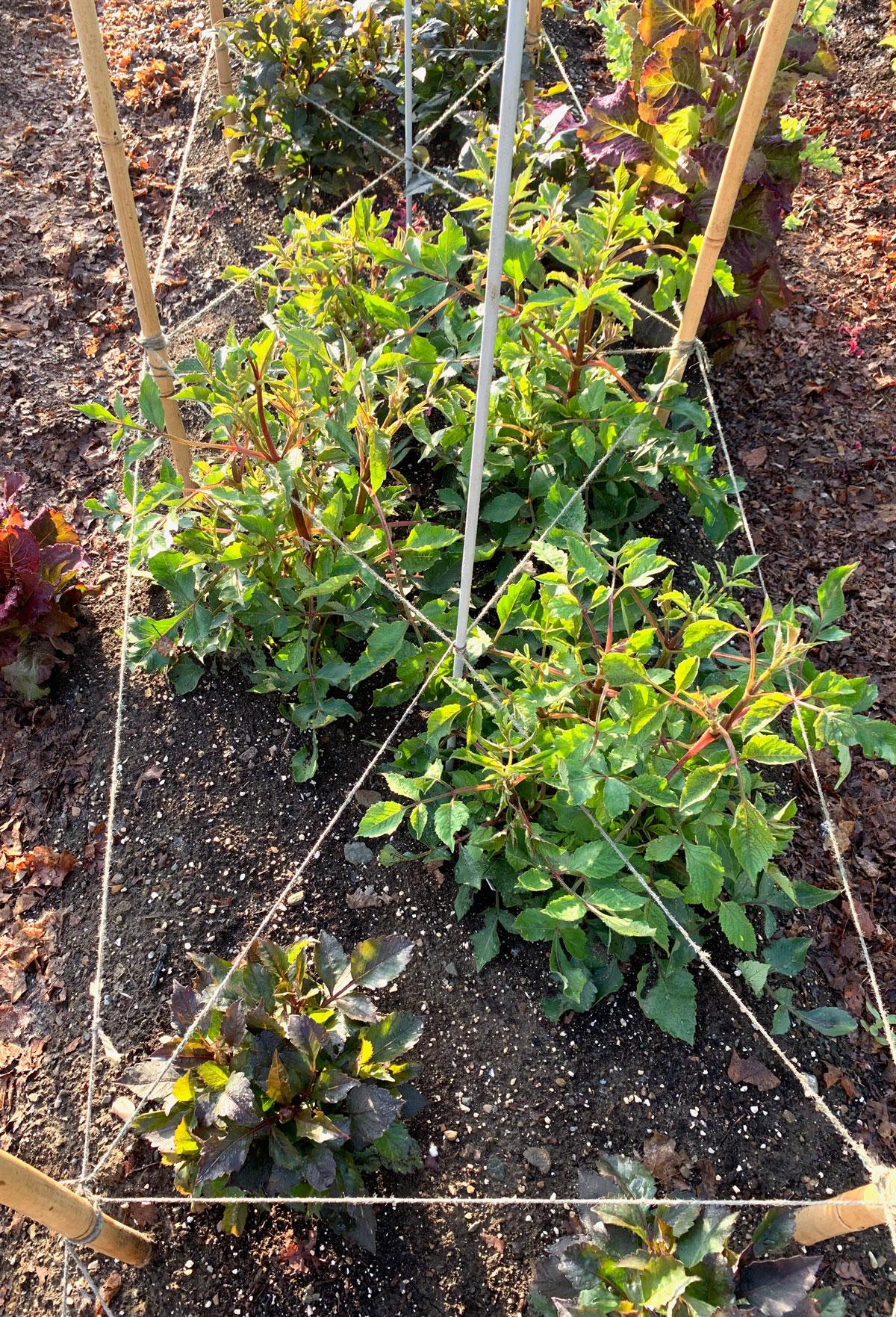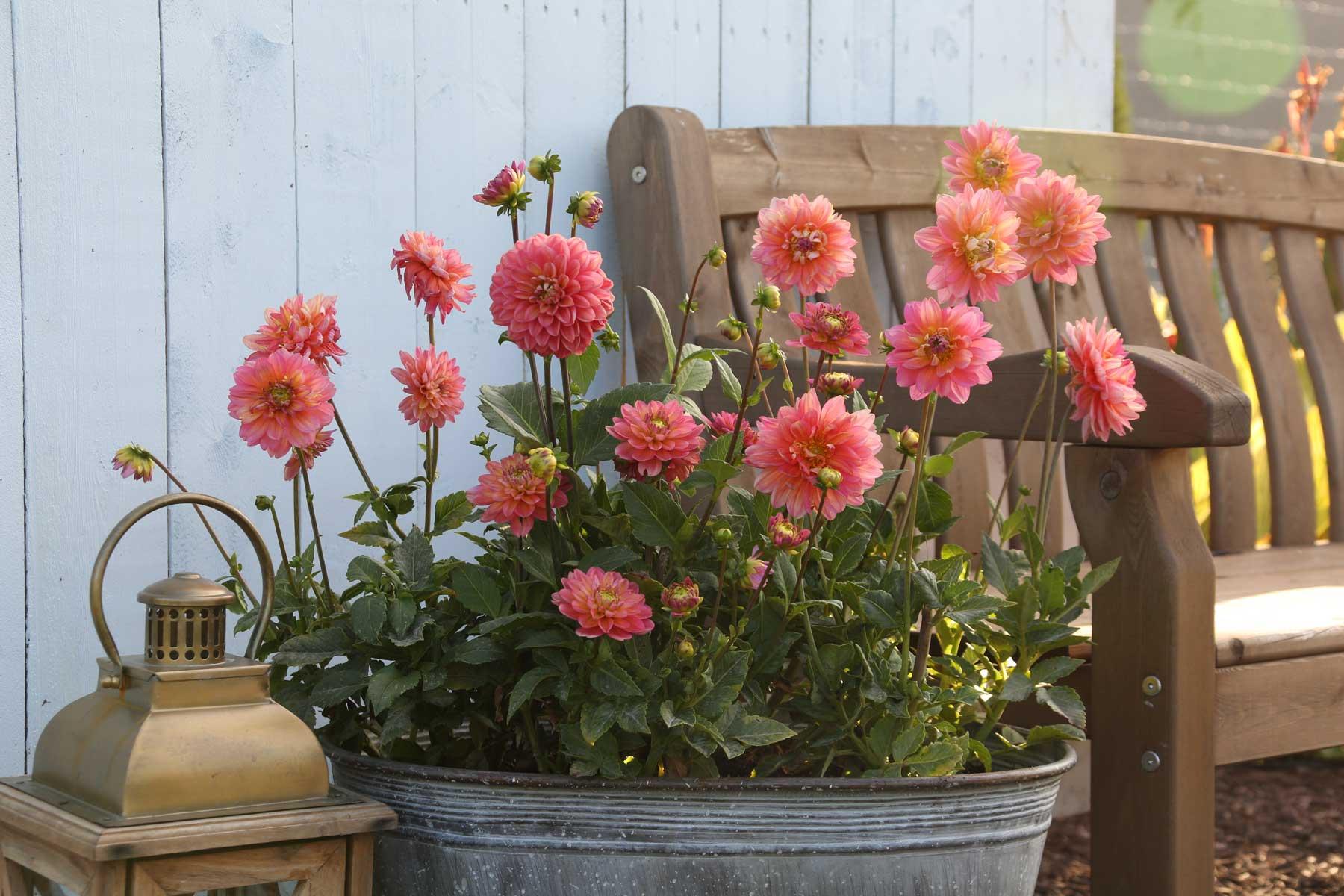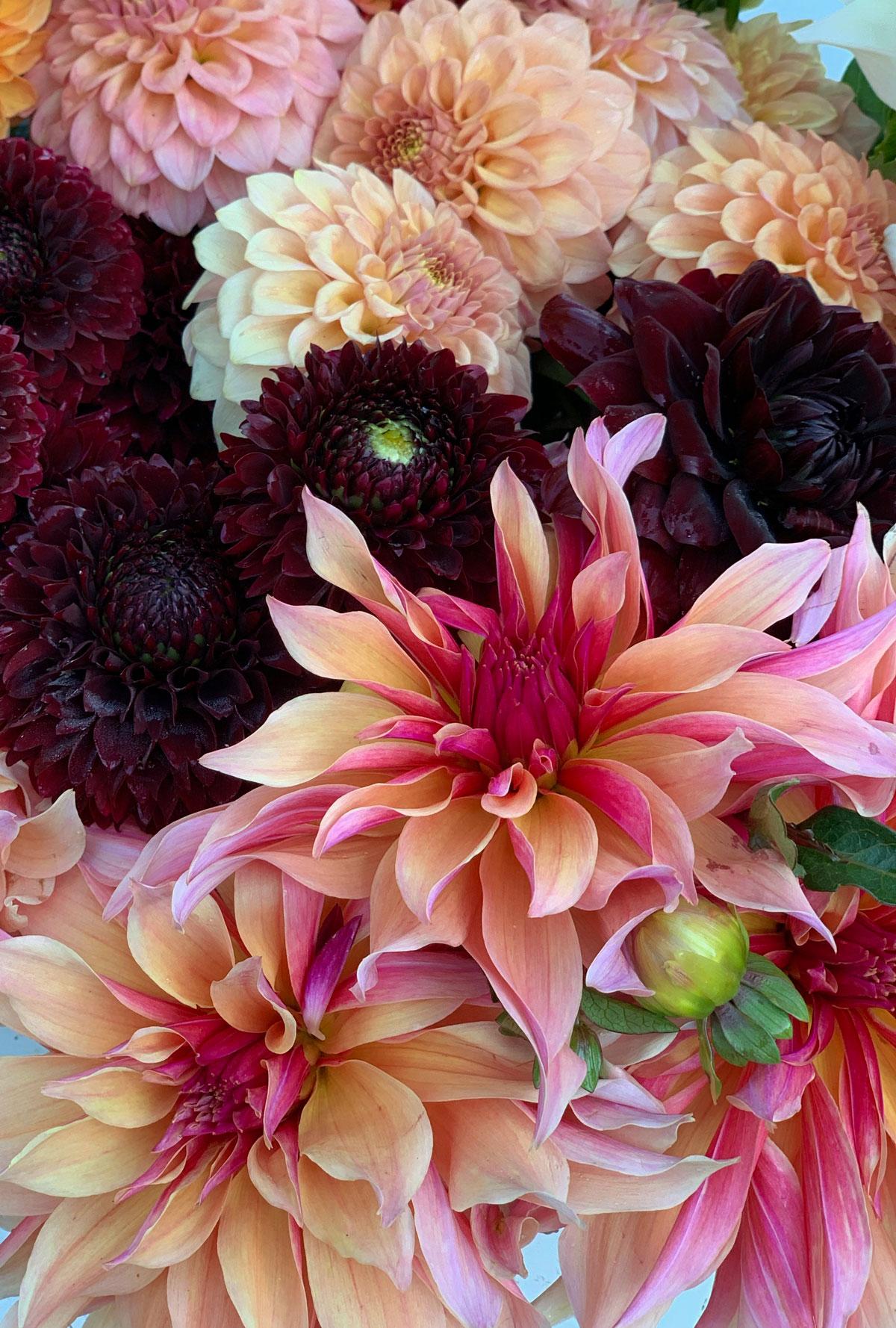Your Guide to Planning, Planting, and Growing Dahlias
One of the best things about growing dahlias is how abundantly they bloom. Dahlias start flowering in midsummer and continue non-stop right through the fall. Just plant the tubers in spring and prepare to be amazed!
See all 8 types of dahlia flowers HERE.

Plan for Success
Dahlias are incredibly easy to grow. Here are a few tips to help you get the best results.
Sun and Shade: Dahlias are sun-lovers and need a minimum of 6 hours of sunlight per day. The more sun they get, the better they bloom, so it's best to plant your dahlias in the sunniest location possible.
Zone: Though dahlias are only winter hardy in zones 8-11, gardeners in zones 3-7 can grow dahlia as annuals. Plant the tubers in spring, and the plants will be in bloom by mid to late summer. Don't know your hardiness zone? You'll find the USDA Hardiness zone map here.
Soil: Most plants, including dahlias, grow best in loose, fertile, well drained soil. To improve the quality of your soil, add compost and an all purpose fertilizer at planting time. Avoid growing dahlias in areas where the soil is soggy or compacted.
When to Plant: Dahlias tubers should be planted in spring after all danger of frost has passed. If you live in a cold climate and want your dahlias to bloom as soon as possible, you can start the tubers indoors or in a greenhouse 4 to 6 weeks before the last frost date. Fill 1 or 2-gallon pots with growing mix and plant one clump of tubers per pot. Put the pots in a warm, sunny place and then transplant your dahlias into the garden when the weather outside is warm and settled. Newly-planted tubers should receive very little water until they have sprouted and the plants are in active growth.

Where to Plant Dahlias
Flower Gardens: Dahlias are at their best from late summer through fall, when many other plants are starting to fade. Be sure you know the ultimate height of each dahlia variety you are planting. While some are suitable for growing in containers, others can reach 4 to 5 feet tall.
Entryways, Patios. and Decks: Border dahlias are ideal for growing in containers or for edging a walkway. These bushy, compact plants grow just 18-24" tall and cover themselves with flowers from midsummer to frost.
Along Fences or for Screening: Dahlias can be functional as well as decorative. Full-size varieties can be planted along a property line to add privacy. They can also be planted in pots to enclose a space or be positioned in the garden to screen an unwanted view.
Vegetable Gardens: Dahlias like the same growing conditions as tomato plants: rich, well drained soil with consistent moisture and plenty of sun. Try planting a few dahlias with your tomatoes and peppers. When harvesting your dinner, you can bring in an armload of fresh flowers for your table.
Cutting Gardens: Dahlias are fabulous cut flowers and just a few plants will give you months of blooms. Growing several different flower styles (such as double, ball and decorative) will give your bouquets a professional look.

How to Plant Dahlias
1. Loosen the soil to a depth of at least 12", then dig a 4-6" deep hole.
2. Set the clump of tubers into the hole. Position the crown (where the tubers connect to the stem) so it is no more than 1-2" below the soil surface.
3. Replace the soil and water only if the soil is very dry. Sprouts will appear in 2-4 weeks.
Watch our video: How to Plant Dahlias

Tips for Success
Choose a sunny spot. Dahlias bloom best in full sun.
To give your dahlias the best possible start, enrich the soil with compost or rotted manure, and an all purpose (5-5-5) granular fertilizer.
Position the tubers in the hole so the stem, where the tubers are joined, is upright.
Sprouts will develop just above where the tubers join the stem. This junction should be planted no more than 1-2" below the soil surface.
Once your dahlias are 8-10" tall, begin fertilizing them with an all-purpose liquid fertilizer every 3 to 4 weeks.
Pinching dahlias when they are about 10" tall will give you a bushier plant with more flowers. See how to do it HERE.
When the first flower buds appear, reduce 2 or 3 of the tallest stems to half their height. This will encourage the plant to produce longer stems.

How to Support Your Dahlias
Dahlias have hollow stems that are susceptible to breaking in rain and wind. If you are growing dahlias that will be more than 3 feet tall, you'll need to provide support to keep the stems from breaking. You can use stakes, cages or a corral method.
If you are using stakes, you will need at least one sturdy, 5- or 6-foot stake per plant. Insert the stakes at planting time to avoid damaging the plant or tubers later in the season. Drive the stake into the ground 8 to 10" deep. As the stems grow, tie them to the stake every foot or two.
Another option is to surround each plant with a tomato cage or a custom cage made of reinforcing wire. These cages can be used year after year. Be sure to put them in place shortly after planting.
Flower farmers often use a corral method to support rows of dahlias. Insert stakes every 3 to 4 feet down both sides of the row. Wrap twine from one stake to another, starting at a height of about 12", so the plants are contained within the corral. As the plants grow, you may need to add a second or even third row of twine. For beds that contain a double rows of plants, adding a center stake will provide even more support. (See image above)

Growing Dahlias in Containers
Dahlias can be great plants for pots and planters. You can combine them with other plants, but most gardeners find they grow best on their own.
Border dahlias may be grown in relatively small pots with a minimum of width and depth of 12". Full size dahlias need a large container that's a minimum of 18" deep and 18" wide. The bigger the better.
Fertilize your container-grown dahlias every few weeks (or apply a time-release fertilizer). Always water deeply to ensure the entire root ball gets a good drink. This may be a daily task from midsummer on.

Caring For Dahlias After They Bloom
Many gardeners treat dahlias as annuals. When the season is over, you can simply dig up the tubers and add them to your compost pile. If you want to save your dahlia tubers for the next growing season, here’s how to do it:
• Make sure each plant is labeled so you know which tubers are which. Once you dig them up, they all look alike. After the first frost, cut off the stems to within 4” of the ground. If possible, wait about a week before digging. This gives the tubers time to start entering dormancy.
• Start digging carefully, 10-12" out from the stem. Gently lift the tubers from the ground, using caution as they are fragile. If weather permits, allow the entire clump to air dry for a few days (protected from rain and frost). This will encourage the tubers to toughen their skin for winter storage.
• Most gardeners divide their dahlia clumps before replanting them. You can do this in the fall, or store the clumps and divide them in the spring. Both techniques work equally well. It really depends on your time and storage space.
• Temperature and humidity are critical variables for successful winter storage. It may take a few years to perfect your technique. Before storing the tubers, trim back the stems to about 3". Tubers may be stored in plastic bags, paper bags, boxes, or be packed into crates filled with sand, sawdust or vermiculite. Learn about the options here: How to Overwinter Dahlias. Tubers should be stored in a cool (45-50°F), dark place. Check them monthly to make sure the tubers are not too wet (rotting) or too dry (getting wrinkly). Adjust humidity levels accordingly.


